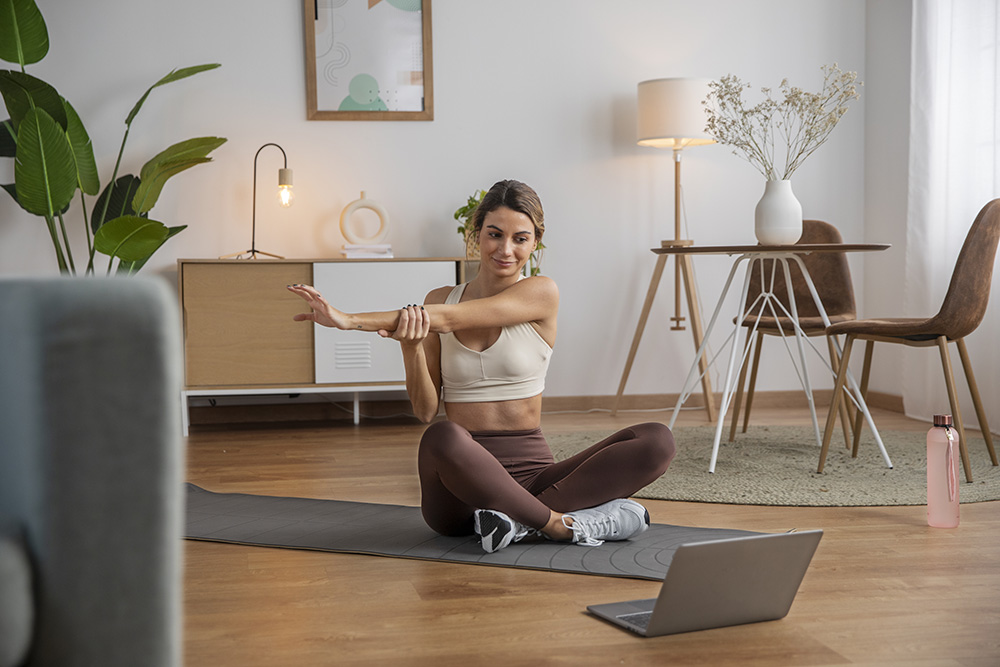
In today's fast-paced world, finding time to visit the gym can be a challenge. However, maintaining a regular exercise routine is crucial for our physical and mental well-being. The good news is that you don't need expensive equipment or a gym membership to stay fit. With a little creativity and dedication, you can achieve an effective workout right in the comfort of your own home.
In this article, we'll explore a variety of bodyweight exercises that target different muscle groups, providing you with a comprehensive home workout plan. By incorporating these exercises into your routine, you'll be able to build strength, improve endurance, and boost your overall fitness level without the need for any equipment.
The Benefits of Home Workouts
Before diving into specific exercises, let's take a moment to appreciate the numerous benefits of home workouts:
- Convenience: You can exercise whenever and wherever you want, without the need to travel to a gym or adhere to specific operating hours.
- Cost-effective: Home workouts eliminate the need for expensive gym memberships or equipment, making fitness accessible to everyone.
- Time-efficient: By cutting out travel time and waiting for equipment, you can maximize your workout efficiency and fit exercise into even the busiest schedules.
- Privacy: Some people may feel self-conscious exercising in front of others. Home workouts provide a private space where you can focus on your fitness goals without distractions or judgment.
- Customization: You have the freedom to tailor your workouts to your specific needs, preferences, and fitness level, ensuring a personalized experience.
Effective Bodyweight Exercises
Now that we've established the benefits of home workouts, let's explore some highly effective bodyweight exercises that target various muscle groups.
1. Push-ups
Push-ups are a classic exercise that primarily targets the chest, shoulders, and triceps. They also engage the core muscles for stability. To perform a push-up:
- Start in a high plank position with your hands slightly wider than shoulder-width apart and your feet together.
- Lower your body by bending your elbows until your chest nearly touches the floor, keeping your body in a straight line from head to toes.
- Push yourself back up to the starting position, engaging your chest and triceps.
- Repeat for the desired number of repetitions.
Modifications:
- If full push-ups are too challenging, you can perform them with your knees on the ground or do incline push-ups with your hands on a stable elevated surface.
- For an extra challenge, try decline push-ups with your feet elevated on a chair or step.
2. Squats
Squats are a fundamental lower body exercise that targets the quadriceps, hamstrings, glutes, and calves. They also engage the core muscles for stability. To perform a squat:
- Stand with your feet shoulder-width apart, toes pointing slightly outward.
- Bend your knees and lower your hips as if you're sitting back into a chair, keeping your chest up and your weight in your heels.
- Lower yourself until your thighs are parallel to the ground, or as low as comfortable.
- Push through your heels to stand back up, engaging your glutes and quadriceps.
- Repeat for the desired number of repetitions.
Modifications:
- If you have trouble maintaining balance, you can perform squats while holding onto a stable surface, such as a chair or countertop.
- To increase the intensity, try jump squats or single-leg squats.
3. Lunges
Lunges are another excellent lower body exercise that targets the quadriceps, hamstrings, glutes, and calves. They also challenge your balance and stability. To perform a lunge:
- Stand with your feet hip-width apart and your hands on your hips.
- Step forward with your right leg and lower your body until both knees are bent at 90-degree angles, keeping your front knee above your ankle.
- Push back to the starting position and repeat with your left leg.
- Alternate legs for the desired number of repetitions.
Modifications:
- If you have trouble with balance, you can perform lunges while holding onto a stable surface or do reverse lunges by stepping backward instead of forward.
- For an extra challenge, try walking lunges or jumping lunges.
4. Plank
The plank is an excellent exercise for strengthening the core muscles, including the abs, obliques, and lower back. It also engages the shoulders, arms, and legs. To perform a plank:
- Start in a push-up position with your forearms on the ground, elbows directly under your shoulders.
- Keep your body in a straight line from head to toes, engaging your core muscles.
- Hold this position for the desired amount of time, typically 30 seconds to 1 minute.
Modifications:
- If a full plank is too challenging, you can perform a modified plank with your knees on the ground.
- To increase the difficulty, try a single-arm or single-leg plank, or add alternating arm and leg lifts while maintaining the plank position.
Creating a Home Workout Routine
To create an effective home workout routine, aim to include exercises that target all major muscle groups and provide a balance of strength and cardiovascular training. A sample routine might include:
- Warm-up: 5-10 minutes of light cardio (e.g., jumping jacks, jogging in place, high knees)
- Push-ups: 3 sets of 10-15 repetitions
- Squats: 3 sets of 12-20 repetitions
- Lunges: 3 sets of 10-15 repetitions per leg
- Plank: 3 holds of 30-60 seconds each
- Cool-down: 5-10 minutes of stretching
Aim to perform this routine 2-3 times per week, allowing for rest days in between to promote muscle recovery and prevent overtraining. As you progress, you can increase the number of repetitions, sets, or add new exercises to continue challenging your body.
Conclusion
Home workouts offer a convenient, cost-effective, and time-efficient way to maintain a regular exercise routine and achieve your fitness goals. By incorporating bodyweight exercises like push-ups, squats, lunges, and planks into your routine, you can target all major muscle groups and improve your overall strength, endurance, and well-being.
Remember to listen to your body, start slowly, and gradually increase the intensity and complexity of your workouts as you build strength and confidence. With consistency and dedication, you'll soon discover the power of home workouts in transforming your physical fitness and overall health.
References
- American Council on Exercise. (2014). Bodyweight Exercises: Strength Training Without Equipment. Retrieved from https://www.acefitness.org/education-and-resources/lifestyle/blog/3780/bodyweight-exercises-strength-training-without-equipment/
- Harvard Health Publishing. (2020). The 4 most important types of exercise. Retrieved from https://www.health.harvard.edu/exercise-and-fitness/the-4-most-important-types-of-exercise
- Mayo Clinic. (2019). Strength training: Get stronger, leaner, healthier. Retrieved from https://www.mayoclinic.org/healthy-lifestyle/fitness/in-depth/strength-training/art-20046670
- U.S. Department of Health and Human Services. (2018). Physical Activity Guidelines for Americans, 2nd edition. Retrieved from https://health.gov/sites/default/files/2019-09/Physical_Activity_Guidelines_2nd_edition.pdf
Latest Posts
-
1
-
2
-
3
-
4
-
5




